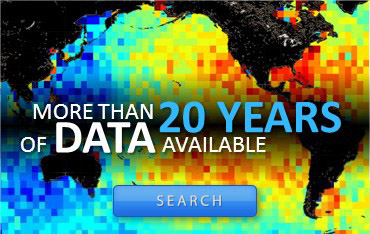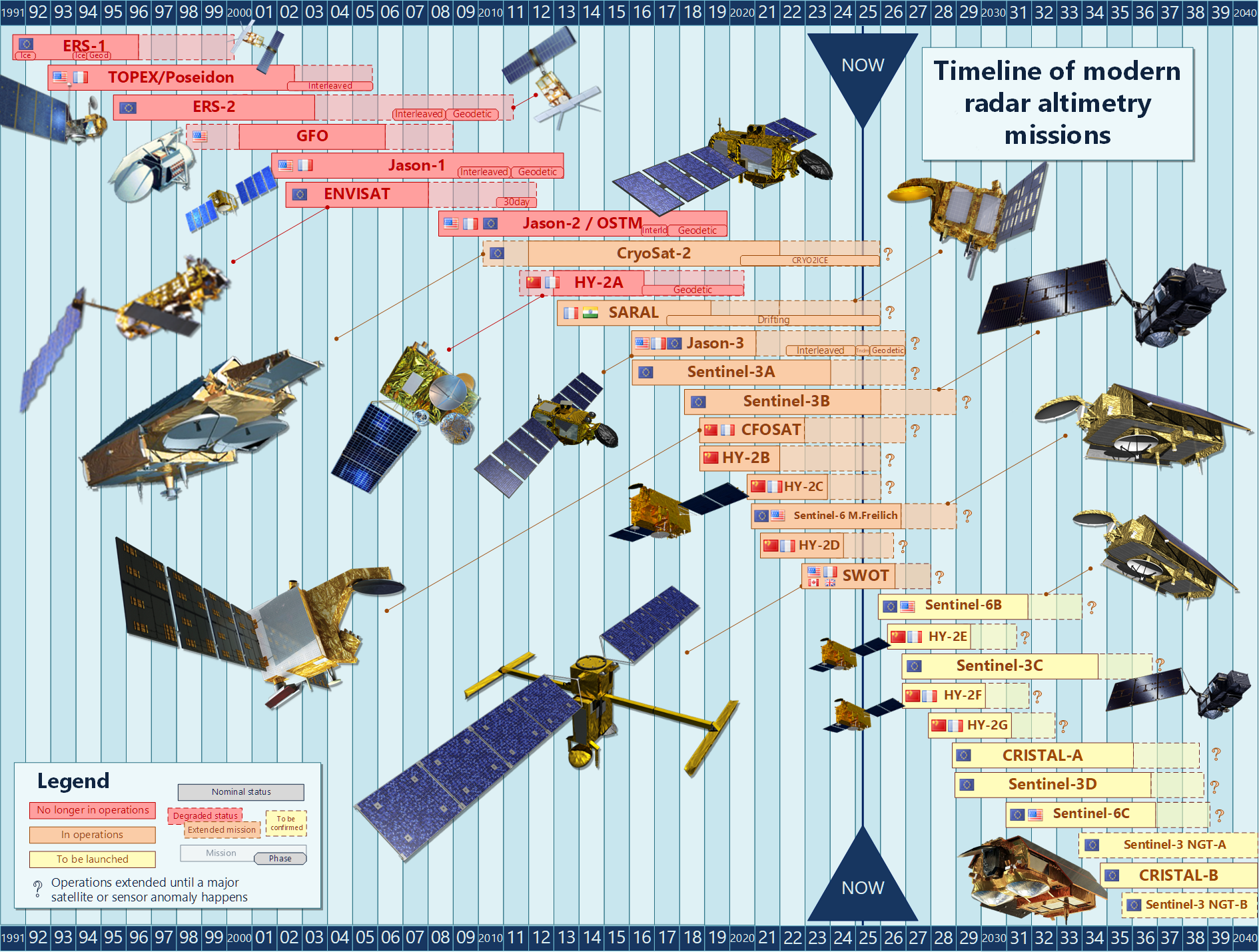1999 Images of the Month
-
Dec. 1999: Measuring waves... with waves
Spaceborne altimeters measure sea surface height first and foremost, but we can also obtain other physical parameters using satellite altimetry techniques.
-
Nov. 1999: Eddies: two sides to the story
Satellite altimeters provide a very clear view of eddy structures, but other sensors are also capable of locating them.
-
Oct. 1999: Mediterranean tides are more than meets the eye
Most people associate the Mediterranean with small tides. However, this is not to say there are no tides at all. Indeed, they generate a mean variation of about 40 centimeters, but atmospheric conditions often hide the rise and fall in sea level.
-
Sep. 1999: Mare nostrum, Mare incognita ?
Ever since ancient times, the Mediterranean Sea has occupied a vital place in the lives of the peoples on its shores. It is also a sea of mystery.
-
Aug. 1999: Great Lakes as seen by Topex/Poseidon
The Topex/Poseidon Altimetry satellite has been optimized to measure the level of the oceans. However, inland seas and lakes are also easily observable, offering an expanse of water for the instrument to view and monitor.
-
Jul. 1999: Aral Sea could be rising from the dust
The Aral Sea has been drying up since the 1960s as a result of the large amounts of water diverted by cotton farmers from the two rivers feeding into it, the Syr Darya and the Amu Darya.
-
Jun. 1999: An eddy blown by the wind
The winds and sea are in constant motion and their movements are closely interdependent. The wind not only generates waves, it also drives eddy movements on the ocean surface.
-
May 1999: A turbulent sea
Ocean currents are sometimes compared to "sea highways", because ships follow their flow to gain speed. But this picture is not wholly accurate.
-
Apr. 1999: Jason-1 put to the test
Big changes in temperature, high-energy radiation and micrometeorites are just some of the factors that make space such a very harsh environment.
-
Mar 1999: Observing the ocean to improve forecasting
Modeling a phenomenon involves identifying its main characteristics and expressing them mathematically to better understand and, above all, predict how the phenomenon is likely to evolve.
-
Feb. 1999: Route du Rhum 1998
Combined data sets - altimetry and Argos/GPS - can be used to compare the results of different navigation strategies.
-
Jan. 1999: A glassy sea... of ridges and valleys
The Mean sea surface is the stable part of the sea surface height. It includes bumps and valleys due to gravity inhomogeneities, and bathymetry
News
 Archives .
Archives . Aviso Newsletter .
Aviso Newsletter .- Search.
- Front-page news.
 Image of the month .
Image of the month . 2025 .
2025 . 2024 .
2024 . 2023 .
2023 . 2022 .
2022 . 2021 .
2021 . 2020 .
2020 . 2019 .
2019 . 2018 .
2018 . 2017 .
2017 . 2016 .
2016 . 2015 .
2015 . 2014 .
2014 . 2013 .
2013 . 2012 .
2012 . 2011 .
2011 . 2010 .
2010 . 2009 .
2009 . 2008 .
2008 . 2007 .
2007 . 2006 .
2006 . 2005 .
2005 . 2004 .
2004 . 2003 .
2003 . 2002 .
2002 . 2001 .
2001 . 2000 .
2000 .- 1999.
- Dec. 1999: Measuring waves... with waves.
- Nov. 1999: Eddies: two sides to the story.
- Oct. 1999: Mediterranean tides are more than meets the eye.
- Sep. 1999: Mare nostrum, Mare incognita ?.
- Aug. 1999: Great Lakes as seen by Topex/Poseidon.
- Jul. 1999: Aral Sea could be rising from the dust.
- Jun. 1999: An eddy blown by the wind.
- May 1999: A turbulent sea.
- Apr. 1999: Jason-1 put to the test.
- Mar 1999: Observing the ocean to improve forecasting.
- Feb. 1999: Route du Rhum 1998.
- Jan. 1999: A glassy sea... of ridges and valleys.
 1998 .
1998 .
 Operational news and status .
Operational news and status .

















